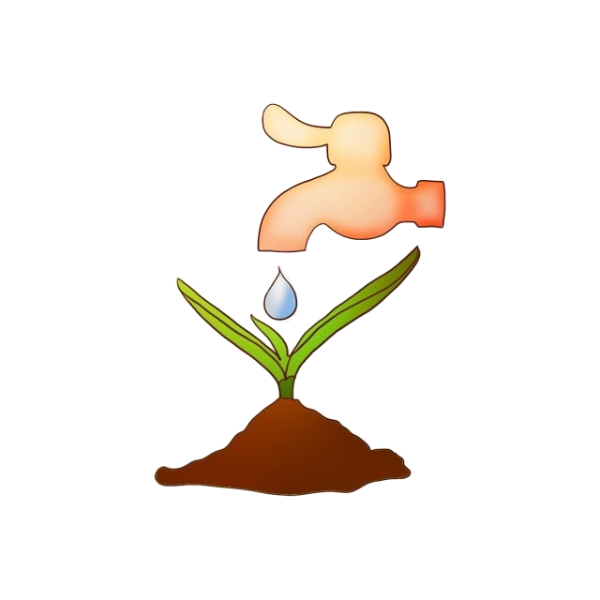Agroforestry is a quite push to grow crops on the interspaces of trees.
Agroforestry is an age old practice followed in some form or other in different parts of the world to encompasses promotion of components like woody perennials, crops, fruit crops and other natural resources in temporal and spatial sequences, which will ultimately alter livelihood options and sustainability. Because of inbuilt resilience of agroforestry systems, they were traditionally considered as livelihood opportunities in complex, diverse, fragile, and poor rainfed ecosystem. Agroforestry system play major role in protecting environment and forests and integrating farming components requiring lesser space and time to produce crop per drop of water and per plot of land. Realising the importance of agroforestry, we tried to disseminate different agroforestry models to farmers’ fields as a rational way of farming and on regular basis diagnostic survey which has been undertaken from the year 2000 onward to identify the status of agroforestry system in new alluvial zone of West Bengal. This area was dominated by marginal category of farmers but, the practice of retaining multipurpose trees in the farms was in vogue. Different types of agroforestry systems viz., agri-silviculture (trees + crops), agri-horticulture (fruit trees + crops), agri-horti-silviculture (trees + fruit trees + crops), horti-agricultue (fruit trees + vegetables), boundary plantation (trees on boundary + crops), silvi-apiculture (trees + honeybee), horti-apiculture (fruit trees + honeybee) , aqua-forestry (fish + tree) and homestead ( combination of trees, fruit trees, vegetable etc.) were prevalent in the high density populated alluvial zone. Among forest tree species; Dysoxylum binectariferum, Anthocephalus cadamba, Gmelina arborea and teak and among fruit crops mango, guava, ber and banana were dominated in different agroforestry systems. Agri-horticulture, agri-horti-silvi, agri-silviculture and boundary plantations were among the dominant agroforestry system in the study area. On the basis of that survey some successful types of agroforestry systems were identified among which Mango-based agroforestry systems with rice and suitable crop rotations was found to be most profitable and socially acceptable agroforestry practice in New Alluvial Zone of West Bengal.
Keywords: agri-silviculture, agri-horticulture and aqua-forestry
- Introduction
The over increasing population and decline in per capita availability of land in the country, practically there is no scope for horizontal expansion of land for agriculture in the state of West Bengal. This state is agriculturally divided into 6 agroclimatic zones, namely the Northern Hill, Terai-Tista Alluvial, New Alluvial, Vindhyan Alluvial, Coastal Saline and Undulating Red and Laterite regions. Among these New (or
Gangetic) Alluvial Zone(NAZ) of West Bengal extends in the Lower Gangetic Plain Region, covering Southern part of Uttar Dinajpur, Western part of Malda, Eastern part of Murshidabad, whole Nadia district, North-Eastern part of Howrah; Eastern part of Hooghly, Birbhum, Bankura, Purba and Paschim Medinipur; and Northern parts of North and South 24 Parganas. This NAZ in West Bengal covers a geographical area of 20, 84, 540 ha (approx.) including a cultivable area of about 17, 39, 644 ha. In most areas of NAZ marginal land holdings cover 73 to 94 % of operational holdings which is followed by small land holding (6 to 19 %), then semi medium holding (0 – 7 %) and negligible to very negligible medium to large land holding classes. In such a situation only vertical expansion is possible by integrating farming components requiring lesser space and time to produce crop per drop of water and per plot of land. Agroforestry is suitable for intercropping, soil conservation, wind break, riparian filter and yield value added products, timber, forages, edible shoots, fiber and craft wood. The returns are recurrent on annual basis after 1-2 years upto 30 years or more without recurring investments on plantations. Agroforestry is an attractive and promising option for sequestering carbon on agricultural lands because it can sequester significant amounts of carbon while leaving the bulk of the land for agricultural production (Montagnini and Nair , 2004). Agroforestry plays vital roles in mitigation of atmospheric accumulation of GHGs (IPCC,2001). Carbon sequestration rates are very encouraging for complex agroforestry, boundary planting , hedgerow intercropping, and home gardens’ (Albrecht and Kandji, 2003; Calfapietra et al., 2010). Agri-Silvi-Fruit-Vegetable based Agro-production models will provide higher economic returns to the farmers, improve the soil, fill the gape of national forest cover (33%) and provide raw material to the industry as well as for domestic use of the rural community. Because of the use of various intercrops, products are obtained even in the early stages of plantation and income would be much higher than any other system. Fruits can be harvested every year from second year onwards and hence regular income will be start much earlier than expected from any other sole woody component. In fact, there is a need to develop agroforestry models as per differential value of tree crop species and also as per soil and climate differences. As there was no standardized practice of agroforestry systems among farmers, disseminations of some profitable and peoples’ choices of practices of agroforestry had been sorted out based on standard procedures followed since the year 2000.
Reference:
Dhara, PK; Panda, S; Sarkar, S and Das, N. 2016. Agroforestry Systems Practised in New Alluvial Zone of West Bengal. In Proc. Intl. Conf. Agriculture, Food Sci., Nat. Resource Management and Environmental Dynamics: The Technology, People and Sustainable Development, 13-14 August 2016, Kalyani, India. First Impression, 2016. ISBN 978-93-85822-28-5. Krishi Sanskriti Publications, N. Delhi. pp. 162-164.
Published In : Academia.edu
